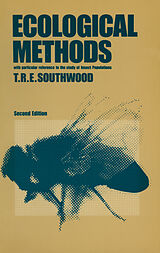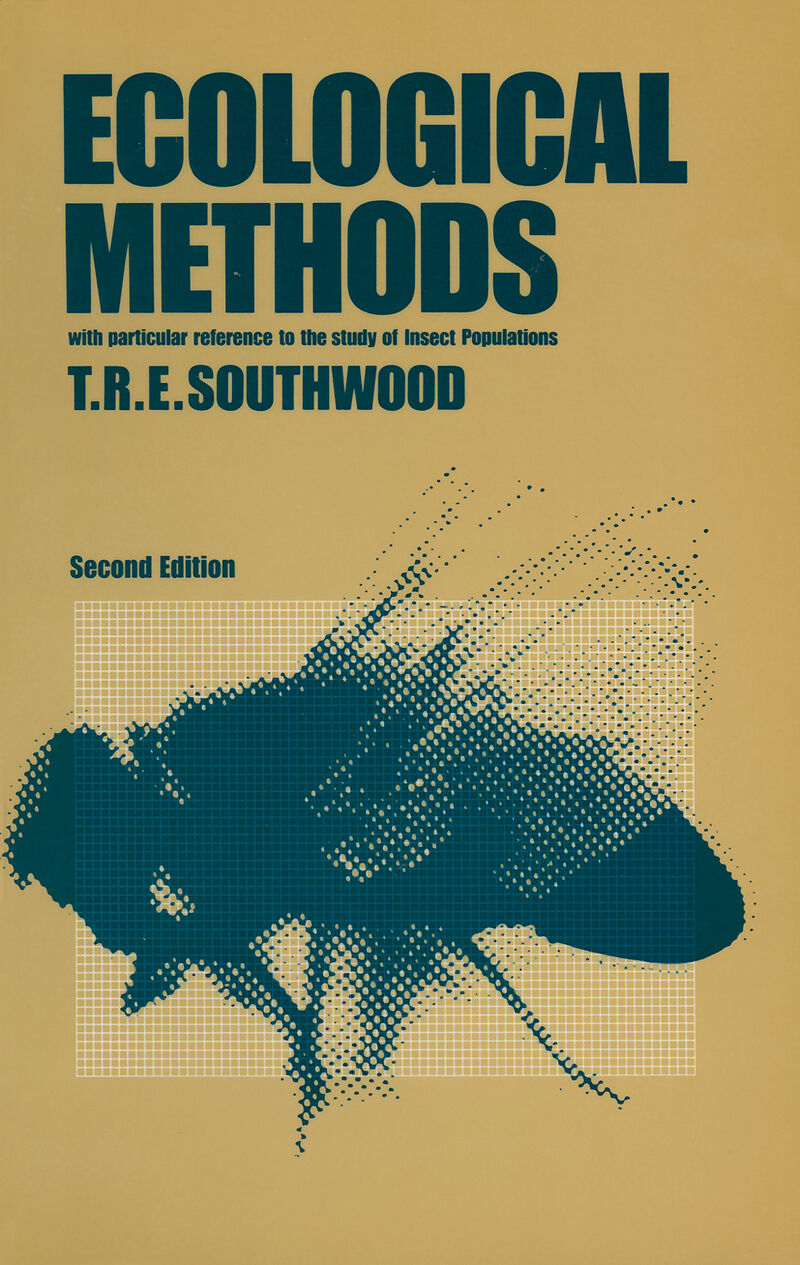Ecological Methods
Einband:
Kartonierter Einband
EAN:
9780412307102
Untertitel:
With Particular Reference to the Study of Insect Populations
Autor:
T. R. Southwood
Herausgeber:
Springer Netherlands
Auflage:
2nd ed. 1978
Anzahl Seiten:
552
Erscheinungsdatum:
31.10.1987
ISBN:
0412307103
the virtual impossibility of extracting the many different species from a habitat with equal efficiency by a single method (e.g. Nef, 1960). 1.1 Population estimates Population estimates can be classified into a number of different types; the most convenient classification is that adopted by Morris (1955), although he used the terms somewhat differently in a later paper (1960). 1.1.1 Absolute and related estimates The animal numbers may be expressed as a density per unit area of the ground of the habitat. Such estimates are given by nearest neighbour and related techniques (Chapter 2), marking and recapture (Chapter 3), by sampling a known fraction of the habitat (Chapter 4-6) and by removal sampling and random walk techniques (Chapter 7). Absolute population The number of animals per unit area (e.g. hectare, acre). It is almost impossible to construct a budget or to study mortality factors without the conversion of population estimates to absolute figures, for not only do insects often move from the plant to the soil at different developmental stages, but the amount of plant material is itself always changing. The importance of obtaining absolute estimates cannot be overemphasized.
Zusammenfassung
1.1 Population estimates Population estimates can be classified into a number of different types; Such estimates are given by nearest neighbour and related techniques (Chapter 2), marking and recapture (Chapter 3), by sampling a known fraction of the habitat (Chapter 4-6) and by removal sampling and random walk techniques (Chapter 7).
Inhalt
1 Introduction to the study of animal populations.- 1.1 Population Estimates.- 1.2 Errors and Confidence.- 2 The sampling programme and the measurement and description of dispersion.- 2.1 Preliminary Sampling.- 2.2 The Sampling Programme.- 2.3 Dispersion.- 2.4 Sequential Sampling.- 2.5 Presence or Absence Sampling.- 2.6 Sampling a Fauna.- 2.7 Biological and Other Qualitative Aspects of Sampling.- 3 Absolute population estimates using marking techniques.- 3.1 Methods of Marking Animals.- 3.2 Capture-Recapture Methods of Estimating Population Parameters.- 4 Absolute population estimates by sampling a unit of habitat air, plants, plant products and vertebrate hosts.- 4.1 Sampling from the AIR.- 4.2 Sampling From Plants.- 4.3 Sampling from Vertebrate Hosts.- 5 Absolute population estimates by sampling a unit of habitat-soil and litter.- 5.1 Sampling.- 5.2 Mechanical Methods of Extraction.- 5.3 Behavioural or Dynamic Methods.- 5.4 Summary of the Applicability of the Methods.- 6 Absolute population estimates by sampling a unit of habitat freshwater habitats.- 6.1 Open Water.- 6.2 Vegetation.- 6.3 Bottom Fauna.- 7 Relative methods of population measurement and the derivation of absolute estimates.- 7.1 Factors Affecting the size of Relative Estimates.- 7.2 The uses of Relative Methods.- 7.3 Relative Methods Catch Per Unit Effort.- 7.4 Relative Methods Trapping.- 8 Estimates based on products and effects of insects.- 8.1 Products.- 8.2 Effects.- 9 Observational and experimental methods for the estimation of natality, mortality and dispersal.- 9.1 Natality.- 9.2 Mortality.- 9.5 Dispersal.- 10 The Construction, description and analysis of age-specific life-tables.- 10.1 Types of Life-Table and the Budget.- 10.2 The Construction of a Budget.- 10.3 The Description ofBudgets and Life-Tables.- 10.4 The Analysis of Life-Table Data.- 11 Age-grouping of insects, time-specific life-tables and predictive population models.- 11.1 Age-Grouping of Insects.- 11.2 Time-Specific Life Table and Survival Rates.- 11.3 Predictive Population Models.- 12 Systems analysis and modelling in ecology.- 12.1 Types of Systems Model.- 12.2 Analysis and Simulation in Models.- 12.3 Deterministic and Stochastic Models.- 12.4 Difference and Differential Models.- 13 Diversity, species packing and habitat description.- 13.1 Diversity.- 13.2 Species Packing.- 13.3 Habitats.- 14 The estimation of productivity and the construction of energy budgets.- 14.1 Estimation of Standing Crop.- 14.2 Estimation of Energy Flow.- 14.3 The Energy Budget, Efficiencies and Transfer Coefficients.- 14.4 Assessment of Energy and Time Cost Strategies.- Author Index.- General Index.

Leider konnten wir für diesen Artikel keine Preise ermitteln ...
billigbuch.ch sucht jetzt für Sie die besten Angebote ...
Die aktuellen Verkaufspreise von 6 Onlineshops werden in Realtime abgefragt.
Sie können das gewünschte Produkt anschliessend direkt beim Anbieter Ihrer Wahl bestellen.
Loading...
Die aktuellen Verkaufspreise von 6 Onlineshops werden in Realtime abgefragt.
Sie können das gewünschte Produkt anschliessend direkt beim Anbieter Ihrer Wahl bestellen.
| # | Onlineshop | Preis CHF | Versand CHF | Total CHF | ||
|---|---|---|---|---|---|---|
| 1 | Seller | 0.00 | 0.00 | 0.00 |
